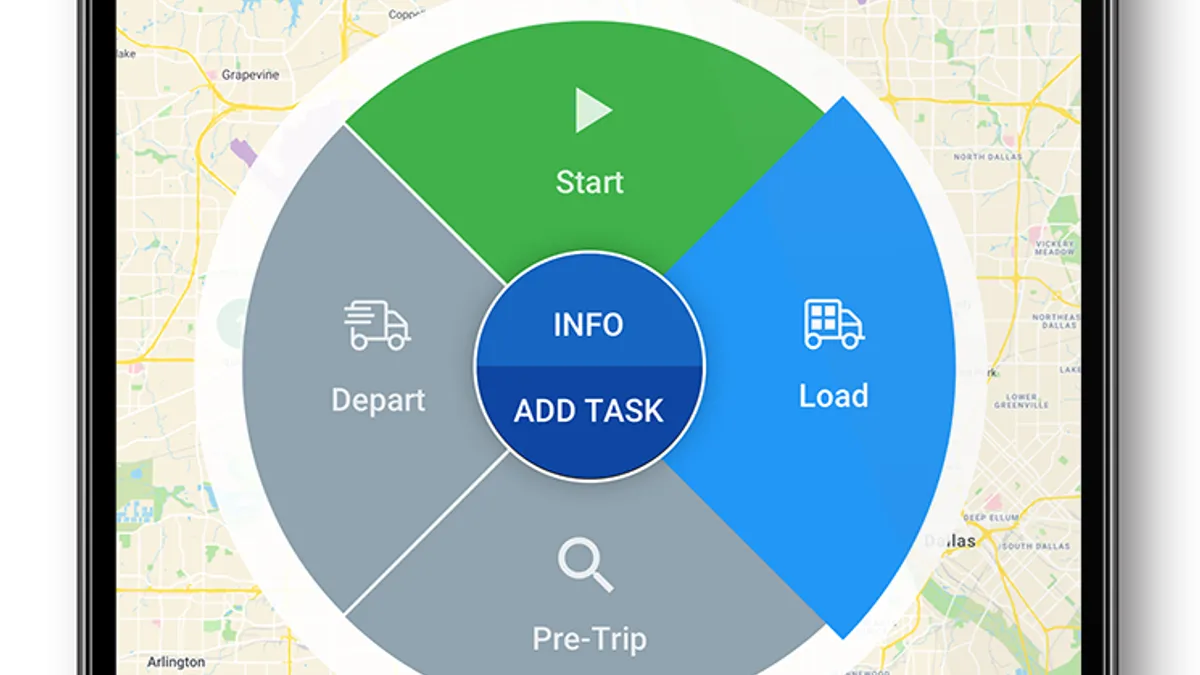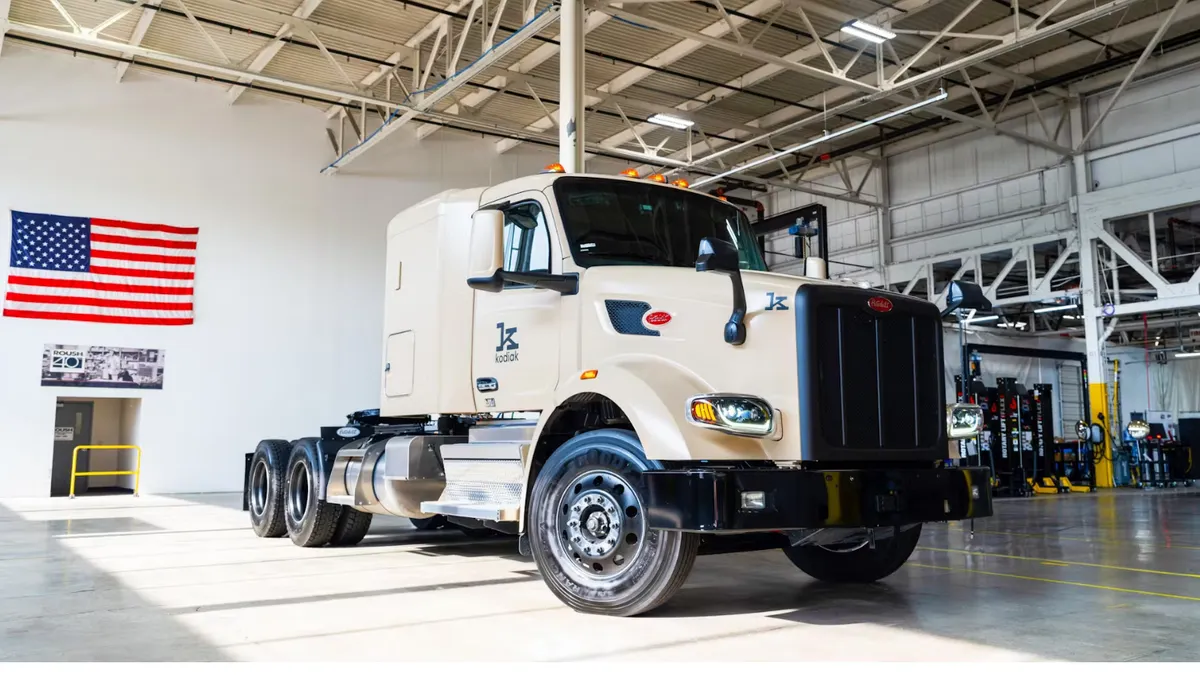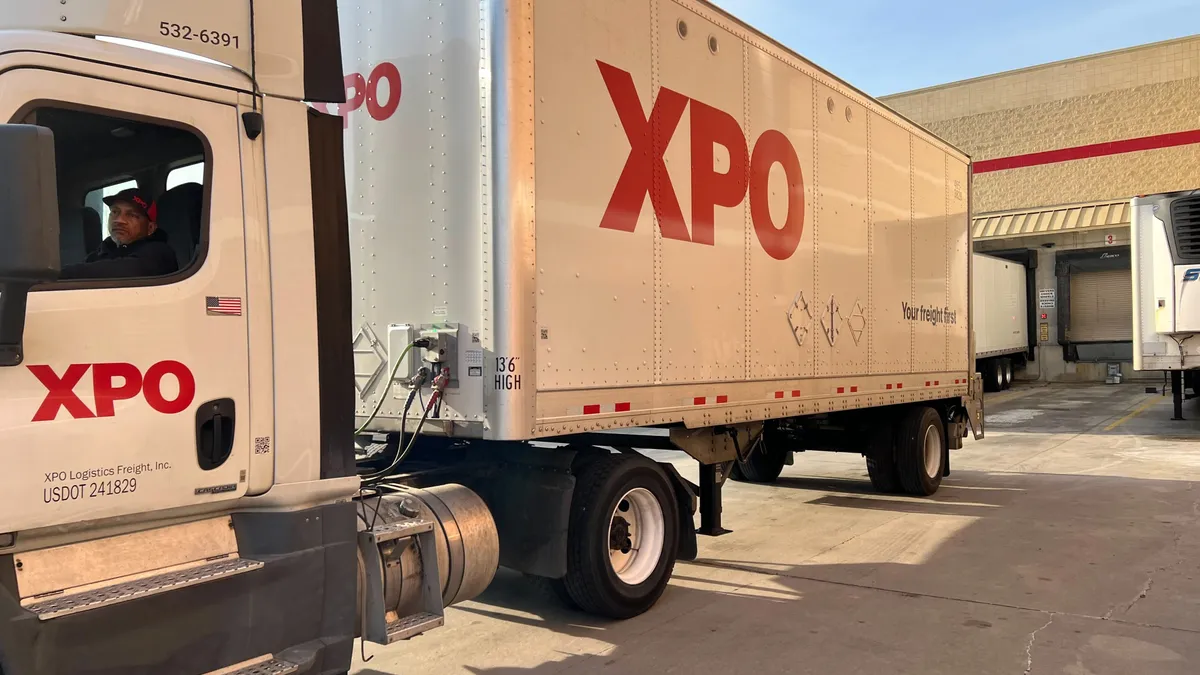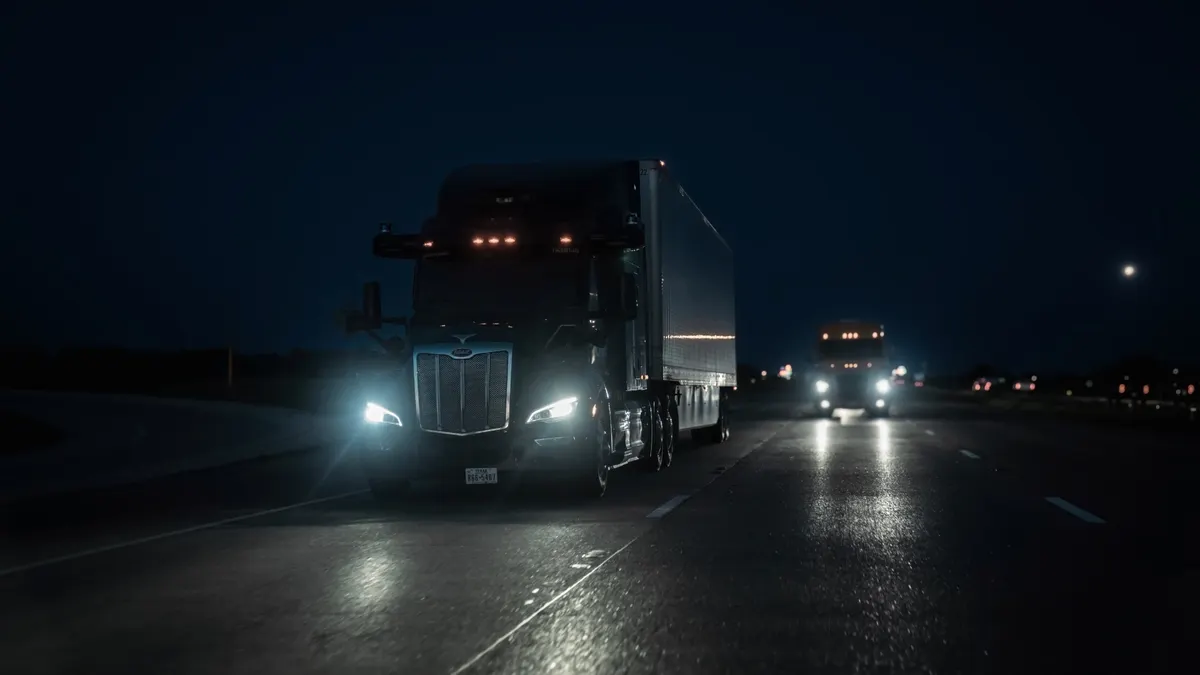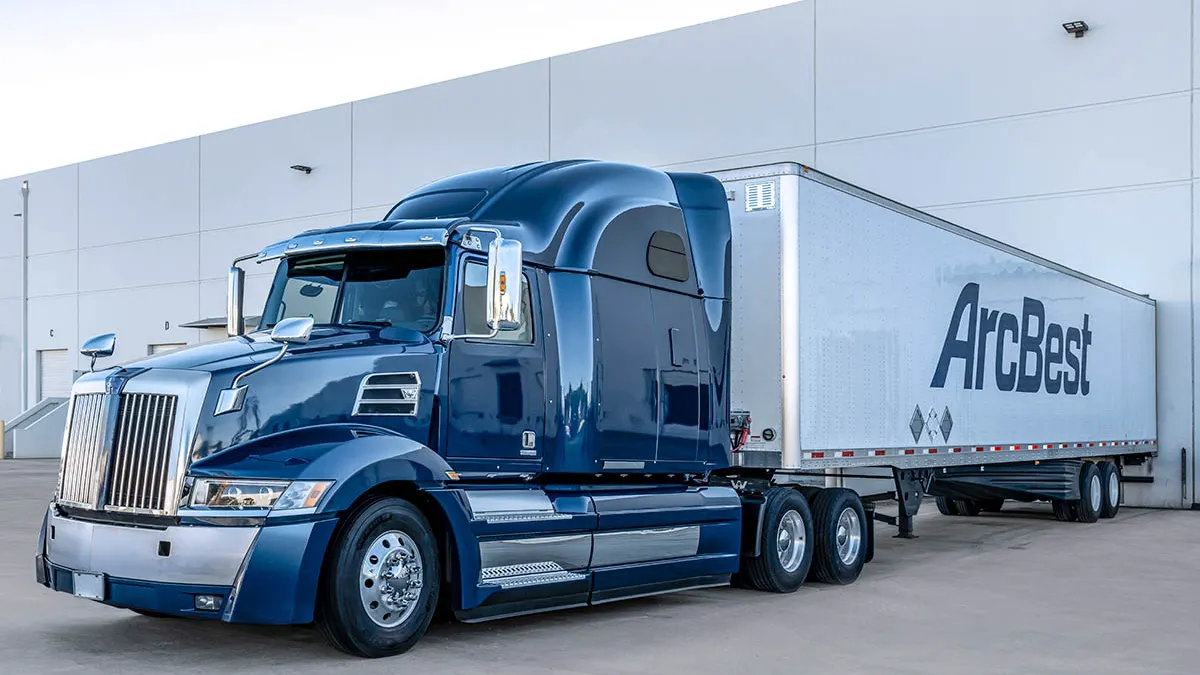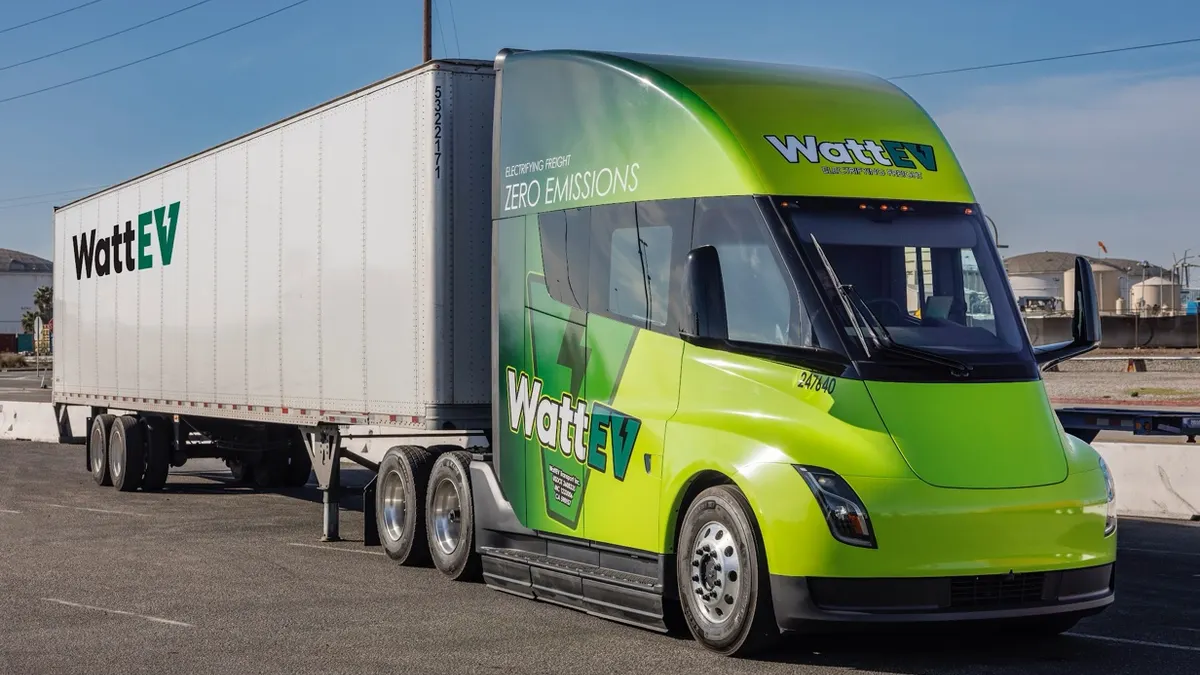This is an opinion piece by Gary Blohm, VP at Omnitracs. Views do not necessarily reflect those of Transport Dive.
Modernization in the trucking and transportation industry starts with the driver. But truck driver turnover remains high year over year — on average approximately 89% for large carriers and 73% for small carriers in 2018, according to the American Trucking Associations.
For the industry to evolve, experienced drivers are a necessity. But many carriers face a revolving door of new hires, and outdated technology is a key factor in trucker dissatisfaction.
Outdated mobile technology, in particular, has historically been a roadblock to driver quality of life. Taking a closer look at industries that use outdated mobile technology — and trucking and transportation is no exception — surveys show that resistance within those industries goes up while employee morale goes down, lengthening the learning curve and increasing employee turnover.
While the trucking industry was an early adopter of mobile technology, the initial investment from commercial trucking companies was, unfortunately, daunting. It left companies with significant “technical debt,” where the investment in legacy technology prevented them from adopting modern solutions.
Because of this, in-cab mobile technology has improved minimally over the past decade. So, current devices and solutions urgently need to be replaced to eliminate inefficiencies and increase driver retention.
Here are five ways outdated mobile technology is a hindrance to truckers:
1. Lack of integration
Take a ride with any driver using legacy technology and find they start the day by physically writing down information from their dash-mounted "mobile terminal."
Keeping a logbook with paper and pen allows drivers to easily reference past load information, but this is an outdated method. After all, the primary purpose of mobile technology within the trucking industry is to make the driver’s life easier.
But many drivers are forced to cope with separate, miniscule applications and processes that are unable to share data between systems, even for the most fundamental tasks. When applications are not integrated or access to historic data is limited, fleets cannot access valuable data insights.
This leads to operational inefficiencies — such as a driver being unaware of extreme wait times at a drop-off location — on top of driver frustrations.
2. Archaic interfaces
Though current smartphone and tablet options rarely require the use of a physical keyboard, dash-mounted devices in over-the-road trucks rely on a keyboard for more efficient data entry.
This is partly due to resistive (as opposed to capacitive) screens that require large buttons or styluses for use. The interface is archaic compared to contemporary mobile standards, and truckers lose time typing in large chunks of text.
On top of that, legacy workflow apps rarely match the real-world process for truck drivers, causing them to become frustrated and switch to texting for more streamlined conversations. Dash-mounted devices also only support 120 to 180 characters, causing drivers to add end of line returns and pad sentences in order to make data legible.
With a lack of copy and paste function, as well as nearly unreadable formatting, time spent on communication is greatly increased. In fact, some of the largest over-the-road carriers communicate the majority of their information between the back office and drivers through text messaging. This is problematic because not only can it lead to a loss of data and increased time scrolling for information, it also poses both safety and security risks.
3. Context-shifting slows driver workflows
In older devices, HOS, pre-trip inspections, load details and training information, among other processes, are often presented as completely separate applications on the device. Drivers need to interrupt one process to switch applications, causing them to lose their sense of place and ultimately their comprehension.
Also known as "context-shifting," this constant change and lack of a sense of “place” is a major issue that can be avoided by adopting modern mobile technology.
A single, unified workflow could allow drivers to be more productive because they can access everything needed to complete the job in one place.
4. Excessive information
With legacy applications, drivers are overloaded with training manuals, operational procedures, safety precautions and more, even when this information is not needed at the moment. This makes determining the most streamlined process to deliver a load very difficult.
Modern mobile technology, however, is capable of providing this type of context only when a driver needs to access it. Every driver has a different method or routine for accessing this information.
An intuitive, dynamic workflow can capture information that is not only more accurate and up to date, but also more uniform. This type of information flow better sets fleet managers up for enforcing fleetwide procedures and best practices more efficiently, while also providing back end analytics value.
5. Undependable income and low morale
Today’s truckers often have to search for a specific trailer among hundreds on foot, rather than identifying the exact location through a device.
It is also not uncommon for a driver to show up to a pick-up point and find their load has already been retrieved by a different driver, or even canceled entirely, due to disjointed communication.
Delays due to paperwork, inefficient scheduling, unreported detention, and lumper authorizations (i.e. permission for third party crews to handle the trailer) all negatively affect driver income and morale on the job. Eliminating these inefficiencies will help drivers spend more time on the road, thus increasing their income and overall job satisfaction.
The road forward
A truck driver’s job is already difficult and, according to the Bureau of Labor Statistics, one of the most dangerous career choices.
While purchasing new hardware is a significant investment, the trucking industry has the most expensive hiring cost in the United States. The average cost of turnover per driver for participants in a recent study was $8,234, with companies reporting costs ranging up to $20,729.
Especially as the demand for experienced drivers has increased in the wake of COVID-19, it’s time for fleets to more closely examine how modern technology could improve their bottom line from a driver retention perspective.
To submit an opinion piece for publication on the Transport Dive website, please visit https://www.transportdive.com/opinion/submit-opinion/ and view our guidelines and submission form.


